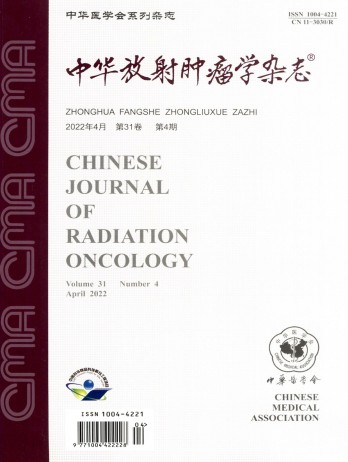17AAG密码酯聚合物胶束对A549细胞裸鼠移植瘤的抑制作用
引用次数: 0
摘要
目的研究17AAG-Cypate胶束对小鼠非小细胞肺癌癌症A549细胞的抑制作用,并探讨其可能的机制。方法建立A549肺腺癌荷瘤裸鼠模型。裸鼠分别用生理盐水(生理盐水组)、X射线(X射线组)、17AAG胶束+X射线(17AAG-M/X组)和17AAG Cypate胶束+激光/X射线(17AAC-Cypate-M/L+X组)处理。定期测量不同组中异种移植物肿瘤的生长,以描绘生长曲线。用免疫组织化学方法检测增殖细胞核抗原(PCNA)的表达。检测微血管密度。TUNEL染色观察异种移植物组织的凋亡。通过蛋白质印迹定量测定p-ERK1/2和p-AKT的表达水平。结果与生理盐水组相比,X射线、17AAG-M/X射线和17AAG-Cypate-M/L+X组对肿瘤生长均有不同程度的抑制作用,尤其是17AAG-Cypate-M/L+X组(均P<0.05),PCNA表达水平均显著下调(均<0.05),结论17AAG-Cypate微胶粒可抑制人非小细胞肺癌裸鼠的生长,其作用可能是降低P-ERK1/2和P-AKT的活性,从而减弱MAPK-ERK和PI3K-AKT信号通路的激活。关键词:17AAG密码酯胶束;肿瘤移植物;A549细胞系;裸体鼠标本文章由计算机程序翻译,如有差异,请以英文原文为准。
Inhibitory effect of 17AAG-cypate polymer micelles on A549 cell xenografts in nude mice in vivo
Objective
To investigate the inhibitory effect of 17AAG-Cypate micelles on the non-small cell lung cancer A549 cells in nude mice and to explore its possible mechanism.
Methods
A549 lung adenocarcinoma tumor-bearing nude mice were established. The nude mice were treated with saline ( saline group), X-ray (X-ray group), 17AAG micelles+ X-ray (17AAG-M/X group) and 17AAG-Cypate micelles+ laser/X-ray (17AAG-Cypate-M/L+ X group), respectively. The growth of xenograft tumors in different groups was measured on a regular basis to delineate the growth curve. The expression of proliferating cell nuclear antigen (PCNA) was measured by immunohistochemistry. The microvascular density was detected. The apoptosis of xenograft tissues was observed by TUNEL staining. The expression levels of p-ERK1/2 and p-AKT were quantitatively measured by Western blot.
Results
Compared with the saline group, varying degrees of inhibition of tumor growth were observed in the X-ray, 17AAG-M/X-ray and 17AAG-Cypate-M/L+ X groups, particularly in the 17AAG-Cypate-M/L+ X group (all P<0.05). In all groups, the expression levels of PCNA were significantly down-regulated (all P<0.05), the microvascular density was remarkably reduced (all P<0.05) and the expression levels of p-ERK1/2 and p-AKT were considerably down-regulated (all P<0.05).
Conclusions
17AAG-Cypate micelles can inhibit the growth of human non-small cell lung cancer in nude mice, probably by reducing the activity of p-ERK1/2 and p-AKT, thereby weakening the activation of the MAPK-ERK and PI3K-AKT signaling pathways.
Key words:
17AAG-cypate micelles; Tumor graft; A549 cell line; Nude mouse
求助全文
通过发布文献求助,成功后即可免费获取论文全文。
去求助
来源期刊
自引率
0.00%
发文量
6375
期刊介绍:
The Chinese Journal of Radiation Oncology is a national academic journal sponsored by the Chinese Medical Association. It was founded in 1992 and the title was written by Chen Minzhang, the former Minister of Health. Its predecessor was the Chinese Journal of Radiation Oncology, which was founded in 1987. The journal is an authoritative journal in the field of radiation oncology in my country. It focuses on clinical tumor radiotherapy, tumor radiation physics, tumor radiation biology, and thermal therapy. Its main readers are middle and senior clinical doctors and scientific researchers. It is now a monthly journal with a large 16-page format and 80 pages of text. For many years, it has adhered to the principle of combining theory with practice and combining improvement with popularization. It now has columns such as monographs, head and neck tumors (monographs), chest tumors (monographs), abdominal tumors (monographs), physics, technology, biology (monographs), reviews, and investigations and research.

 求助内容:
求助内容: 应助结果提醒方式:
应助结果提醒方式:


